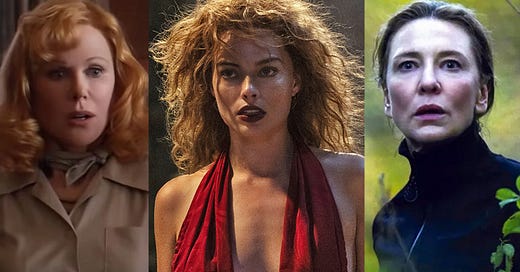Blanchett, Kidman, Robbie: Three Aspects of the Australian Auntie Mame
The scion of fierce Melburnian women tries to express how Australian mothers are different from the rest, and finds a truth about himself in the process.
Welcome to the first Q&S Scribble, the less-serious, more-anecdotal counterpoint to the weekly Quibble, intended to celebrate the arts, entertainment, and storytelling in all its forms.
All good things come in threes, as they say: This is the second of three posts that have ‘three’ in the title, for no reason that I can of, but I’ll take all the good I c…
Keep reading with a 7-day free trial
Subscribe to Q&S Post to keep reading this post and get 7 days of free access to the full post archives.





